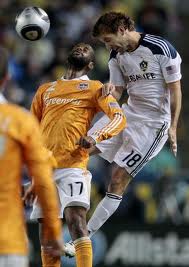A new study conducted by the researchers of the Albert Einstein College of Medicine of Yeshiva University and Montefiore Medical Center that is the University Hospital and academic medical center for Einstein has disclosed that soccer players who head soccer balls repeatedly have high risks brain and cognitive injury.
The researchers for the study selected 38 non-professional football players of 30.8 years of age who played football since childhood and applied an advanced MRI-based imaging technique named the diffusion tensor imaging or DTI.
The researchers recorded the number of times each of the participants headed football during their player life and they categorized them according to those numbers. They took the players’ brain images and compared them with the brain images of other players. After the study the researchers found that players who were frequent headers showed brain injury exactly like mild traumatic brain injury and TBI. The researchers found that soccer player who crossed the limit of 1000 to 1500 heads every year showed serious brain injury. According to the first author of the study Michael Lipton the safety level is 1000 to 1500 per year for casual players and a few times a day for serious professional players.

It is true that the intensity of heading a football is not so much that it can tear internal nerve fibers in brain but repeated heading creates tumble of responses that weakens the brain cells. Due to the weakness of brain cells brain functions namely attention, memory, executive functioning and visual functions gets affected.
A similar study tested the neuropsychological functions of 38 non-professional soccer players and found that frequent headers’ performances in the test were worse than that of the other players.
The findings most recently appeared at the annual meeting of the Radiological Society of North America (RSNA) which was held in Chicago.